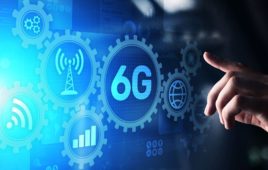Judging by the increasingly fantastic claims of wireless carriers and some technology pundits, the transition to 5G wireless networks is not only imminent but potentially the most important technology innovation in a generation. One carrier even goes so far as to put 5G on par with the Wright brothers first flight at Kitty Hawk, a near-magical enabler of everything from mobile VR to autonomous vehicles to next gen healthcare, manufacturing and retail experiences. But are the promised improvements in capacity, bandwidth and latency really all that?
In the immortal words of Yogi Berra, “it’s like deja vu all over again.” If we learned anything from the transition from 2G to 3G and 3G to 4G, the 5G “revolution” will take years and not always live up to our loftiest expectations. That’s not to say it won’t be a significant improvement over 4G LTE…when and where it’s available. But smart businesses should be judicious about buying into the hype and plan for managing a long-term 5G rollout that probably won’t have us all riding around in driverless vehicles wearing VR suits to perform remote surgery any time soon. Here’s what’s more likely:
It’s going to be a while before most of us can take advantage of 5G. Even though US carriers are already aggressively marketing 5G, in 2019 it will only be available in a few test markets. That will be followed by an expansion into a small number of metropolitan areas, with a phased rollout to the rest of the country (mostly) over time. How much time is anybody’s guess. Initially, carriers will be using 5G as a last mile solution for delivering broadband to the home and mobile hotspots (if you’re lucky enough to be in line-of-sight to a 5G transmission tower). The first 5G capable phones won’t even be on the market until the middle of this year. And if you’re outside of an urban center it may be years before 5G reaches you. (There are still swaths of the country that only have 3G coverage.) So some of those futuristic 5G-enabled experiences–like, say, augmented reality troubleshooting for service technicians–may not work as well or at all when a tech leaves a city.
It’s going to require a lot of new infrastructure, hardware and devices. One reason that the full 5G experience isn’t right around the corner is that it will require a forklift upgrade of existing transmission towers and completely new equipment to take advantage of all the spectrum that carriers have acquired for 5G. Much of that spectrum is in higher frequency, millimeter-wave bands. That will impact signal propagation and reliability (since higher frequency transmissions deliver less signal power over the same distance as lower frequencies), especially in dense urban or heavily forested areas, in bridges and tunnels and other places where it’s hard to be line of sight to a transmission tower. To compensate, carriers will have to significantly boost the power of their transmitters, add directional antennas and/or install many new, smaller cell sites. It took years for carriers to fully upgrade their equipment for 4G. And many enterprises waited to upgrade 3G devices in order to get full value out of their prior investments. Expect the same with 5G.
It won’t replace 4G anytime soon. While carriers build out their 5G infrastructure, users will have to continue relying on 4G. Even as new 5G transmitters and spectrum come online, there will still be a lot of roaming between 4G and 5G. In past transition cycles, that’s caused some devices to get “stuck” on the older technology. So even when 5G arrives, you may not always get 5G performance and throughput.
It can’t entirely eliminate existing wireless mobility performance and reliability issues. 5G won’t change the laws of physics. Even after the buildout, there will still be coverage gaps where you can’t get a strong wireless signal. Wireless performance will vary as users enter and leave cells (so you might still not be able to get a signal at a football game). Performance will still degrade as users get farther from cells or pass in and out of certain kinds of terrain. There will always be wireless interference from other sources of radio transmissions.
For enterprises, the transition to 5G reinforces the need for better operational intelligence to manage and get the most value from their mobile deployments. With nearly 50 percent of mobile workers spending a majority of their work time on third party WiFi and carrier networks, it’s essential to have a complete view of your mobile devices and users when they are outside of the corporate firewall, which applications they’re using and how they’re using networks that you don’t own or control.
As enterprises move to 5G (and start paying for it) they will want and need to keep a close eye on whether they’re getting the coverage and performance they expect. How often are devices really on 5G vs. slower 4G connections? Are they getting the throughput and low latency promised by their carriers? There’s also a cost component, as enterprises weigh the productivity of their mobile workers and decide where to make future investments in mobile applications and services. Complete data is essential to informed decision making. Before deploying new, bandwidth intensive or low latency dependent applications, enterprises will need to know where and how often their workers will actually be in range of the wireless networks that can support their driverless vehicle or VR suit. And, of course, the more enterprises become dependent on mobile workers and applications, the more they need to be sure that their users aren’t taking unnecessary risks and that corporate devices and data are secure.
While it would be fantastic if the most optimistic predictions for 5G turned out to be accurate, if history is any guide it will be a while before we really know. So, in the meantime, enterprises should arm themselves with data, insight and a healthy dose of pragmatism to navigate the transition.




